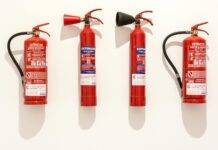
Safety Quiz for Industry: Ensuring Workplace Safety One Question at a Time
Introduction
Safety Quiz for Industry : In today’s rapidly evolving industrial landscape, safety is paramount. Every day, countless workers rely on their knowledge and awareness to navigate potential hazards. To reinforce safety standards and keep workers informed, safety quizzes have become a vital tool. This article delves into the significance of safety quizzes in the industry, their key benefits, and how they contribute to a safer working environment.
The Role of Safety Quizzes in the Industry
Enhancing Knowledge Retention
One of the primary purposes of safety quizzes is to reinforce information learned during training sessions. When employees regularly engage with quiz questions related to safety protocols, it helps solidify their understanding. This knowledge retention can be a lifesaver in critical situations.
Identifying Knowledge Gaps
Safety quizzes also serve as an excellent diagnostic tool. By analyzing quiz results, supervisors can pinpoint areas where employees may lack sufficient knowledge. This allows for targeted training interventions, ensuring a comprehensive understanding of safety protocols.
Encouraging a Safety Culture
A workplace that encourages regular safety quizzes fosters a culture of safety-consciousness. When employees regularly participate in quizzes, it becomes a norm to prioritize safety. This not only reduces accidents but also enhances overall productivity.
Benefits of Incorporating Safety Quizzes
Reduced Accident Rates
Studies have shown that companies implementing safety quizzes experience a significant decrease in workplace accidents. Regular engagement with safety-related questions keeps safety protocols fresh in employees’ minds, reducing the likelihood of mishaps.
Compliance with Regulations
Safety quizzes can help organizations comply with industry regulations. By quizzing employees on specific safety standards and practices, companies can ensure that they meet all required guidelines.
Cost Savings
Fewer accidents mean fewer expenses related to worker compensation, medical bills, and equipment repairs. Implementing safety quizzes is not just about preventing harm; it’s also about protecting the company’s bottom line.
Creating Effective Safety Quizzes
Tailored Content
Safety quizzes should be tailored to the specific needs of the industry and the company. Questions should reflect the unique challenges and risks that employees face in their roles.
Regular Updates
Safety standards evolve, and so should safety quizzes. To remain effective, these quizzes must be regularly updated to incorporate the latest industry best practices and regulations.
User-Friendly Platforms
The delivery of safety quizzes should be accessible and user-friendly. Online platforms and mobile apps make it convenient for employees to engage with quizzes regularly.
Safety quiz multiple-choice questions (MCQs) related to safety in the industry:
Question 1:
What is the primary purpose of Personal Protective Equipment (PPE)?
a) Enhancing comfort
b) Enhancing appearance
c) Ensuring safety
d) Reducing workload
Answer: c) Ensuring safety
Question 2:
Which of the following is a common hazard in industrial settings?
a) Sunshine
b) Rain
c) Heavy machinery
d) Birds
Answer: c) Heavy machinery
Question 3:
What does the acronym “OSHA” stand for?
a) Occupational Safety and Health Association
b) Operational Safety and Hazard Analysis
c) Occupational Safety and Health Administration
d) Operations for Safety and Hazard Assessment
Answer: c) Occupational Safety and Health Administration
Question 4:
What should you do if you encounter a spill of hazardous chemicals in the workplace?
a) Ignore it and continue working
b) Clean it up immediately without any protection
c) Report it to your supervisor and follow proper cleanup procedures
d) Wait for someone else to clean it up
Answer: c) Report it to your supervisor and follow proper cleanup procedures
Question 5:
In case of a fire in the workplace, what is the first step you should take?
a) Extinguish the fire using the nearest fire extinguisher
b) Evacuate the area and activate the fire alarm
c) Call your family to inform them
d) Attempt to put out the fire using water
Answer: b) Evacuate the area and activate the fire alarm
Question 6:
What does “Lockout/Tagout” refer to in industrial safety?
a) Locking doors at the end of the workday
b) A procedure to de-energize and lock machines or equipment during maintenance
c) Tagging items that are out of stock
d) Locking personal belongings in a designated locker
Answer: b) A procedure to de-energize and lock machines or equipment during maintenance
Question 7:
What should you do if you see a coworker not wearing the required safety gear?
a) Ignore it, as it’s their choice
b) Politely remind them to wear the gear
c) Report them to management immediately
d) Laugh at them for being overly cautious
Answer: b) Politely remind them to wear the gear
Question 8:
What is the purpose of safety data sheets (SDS)?
a) To provide a list of office supplies
b) To provide information on hazardous chemicals and their safe use
c) To list employees’ contact information
d) To describe the company’s safety policies
Answer: b) To provide information on hazardous chemicals and their safe use
Question 9:
What should you do if you witness an accident in the workplace?
a) Continue working as usual
b) Pretend you didn’t see anything
c) Offer immediate assistance if it’s safe to do so and report the incident
d) Walk away and let someone else handle it
Answer: c) Offer immediate assistance if it’s safe to do so and report the incident
Question 10:
What is the purpose of a safety audit in an industrial setting?
a) To identify areas where employees can take longer breaks
b) To evaluate compliance with safety regulations and identify potential hazards
c) To determine which employees should be promoted
d) To assess employee morale
Answer: b) To evaluate compliance with safety regulations and identify potential hazards
These questions can be used as part of a safety quiz to assess employees’ knowledge and understanding of industrial safety practices and procedures.
Conclusion
Safety quizzes are not just a formality; they are a cornerstone of a safe and productive workplace. By enhancing knowledge retention, identifying knowledge gaps, and fostering a safety culture, these quizzes play a vital role in safeguarding employees and the company’s success.
FAQs
1. Are safety quizzes mandatory in all industries?
Safety quizzes are not mandatory in every industry, but they are highly recommended, especially in high-risk sectors like construction and manufacturing.
2. How often should safety quizzes be conducted?
The frequency of safety quizzes can vary. Some companies conduct them weekly, while others opt for monthly or quarterly quizzes, depending on their specific needs.
3. Can safety quizzes be conducted online?
Yes, safety quizzes can be conducted online, which offers the advantage of easy accessibility and tracking of results.
4. What should I do if I fail a safety quiz?
Failing a safety quiz is an opportunity for improvement. You should review the material and seek clarification on any concepts you find challenging.
5. Are there penalties for failing safety quizzes?
Penalties for failing safety quizzes typically involve additional training or remedial measures. The focus is on improving knowledge and performance rather than punitive actions.
























